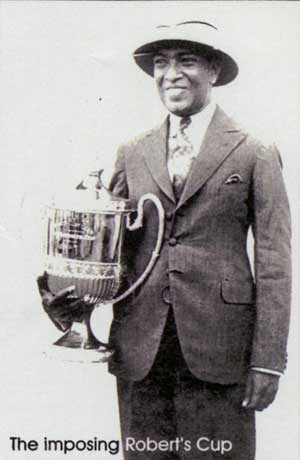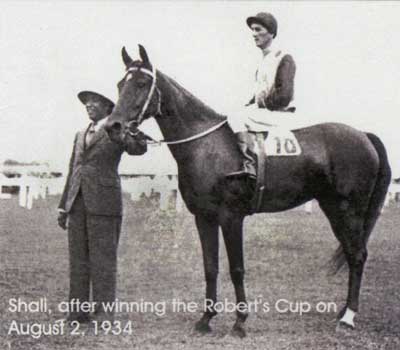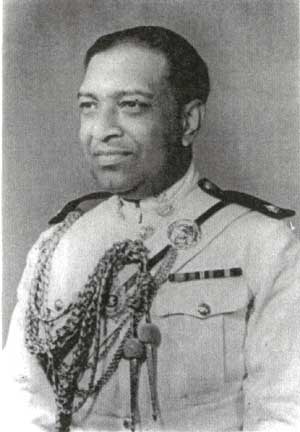This posh residential area in Colombo owes its name to race horse owner, Major Edmund Clarence de Fonseka.
 |
 |
 |
 |
||
During the early part of the century, Edmund Clarke de Fonseka owned some of the largest and the best Plumbago mines in this country. These were at Hikgaha, Goluwanmulle and Himbutamulle. The Plumbago produced from these mines was transported in his own carts to the nearest railway station and shipped to Colombo. Once in Colombo it was taken to his sorting/packing stores at Browning Street (now known as Rosmead Place), or to his warehouse property at Jawatta known as the ‘Greenside Stores’, the subject matter of this article. This property at Jawatta was situated at the very end of the present Jawatta Road, in the area encompassing the present Sulaiman Avenue and Thimbirigasyaya Road.
The property was subsequently gifted to his only son Edward Clarence de Fonseka (E. C. Jnr.). Edward Clarence loved horses and kept some of the best in his stables at the Jawatte property. At one point he and his wife jointly owned more then 40 horses. His horses won many a racing event, and even around the late 50’s he served the Ceylon Turf Club as a ‘starter’ at many a racing event. E. C. Junior’s horses were raced under the name ‘Mr. Bert’, named after his wife Bertha whom he affectionately called ‘Bert’.
 His love of horses and horse racing made him name this property subsequently as ‘Goodwood Gardens’. The main access road to his warehouse and stables was named ‘Ascot Avenue’ and two by lanes were named ‘Epsom Street’ and ‘Aintree Street’. All these roads were named after premier horse racing venues in England and exist to date. Ascot Avenue connected Thimbirigasyaya Road to Sulaiman Avenue. However today the Sulaiman Avenue end has been barred for vehicular traffic. The news paper clipping of the turfite’s application and acceptance has been reproduced on the left.
His love of horses and horse racing made him name this property subsequently as ‘Goodwood Gardens’. The main access road to his warehouse and stables was named ‘Ascot Avenue’ and two by lanes were named ‘Epsom Street’ and ‘Aintree Street’. All these roads were named after premier horse racing venues in England and exist to date. Ascot Avenue connected Thimbirigasyaya Road to Sulaiman Avenue. However today the Sulaiman Avenue end has been barred for vehicular traffic. The news paper clipping of the turfite’s application and acceptance has been reproduced on the left.
Ascot, founded in 1711 by Queen Anne, is one of the world’s great racecourses. Today Ascot Racecourse stages 25 days of the highest quality flat and National Hunt racing each year. Royal Ascot staged at this venue is the world’s most famous race meeting and is renowned as an international occasion of tradition and style. Top class flat racing takes place at Ascot from May to October, with the very best of jump racing featured during the winter.
Aintree is the home of the world famous steeplechase, The Grand National. Epsom Downs Racecourse is the home of the Epsom Derby and Oaks.
In his book ‘Running in the Family’, Sri Lankan born author Michael Ondaatje writes about the great days spent at the races, and this particular story about E. C. de Fonseka. This book is a semi-autobiographical account of his journey back to his homeland. Michael Ondaatje was the Booker Prize winning author of the book ‘The English Patient’, later made popular by the Oscar winning film of the same name.
‘The most dangerous track profession was starter of the race, and one of the few who survived was Clarence de Fonseka (E. C. Junior), who was famous for knowing every horse in the country by sight. As starter, he positioned himself at the far end of the track. And to forestall threats of death from the crowd in the ‘Ghandi Enclosure’ (the enclosure in the middle of the track, where the poorest stood), Clarence kept his fastest horse near him at all times. If a popular horse lost, the mob would race across the field to the starting post to tear him apart. Clarence would then leap onto his horse and gallop down the track in solitary splendor.’
E. C. Junior’s involvement with horses and horse racing waned over the years. Horse racing too gradually disappeared from the social calendar of Ceylon and in 1962, came to a complete halt.
 |
 |
 |
The picture on top shows E. C. de Fonseka with the imposing Robert’s Cup which he won in 1943 with his horse ‘Shali’. This horse was subsequently gifted to the Kotelawela Defense Academy.
In later years E. C. lived with his family and a few horses in a house called ‘The Nest’ in Diyatalawa. Failing health made him dispose of his bellowed horses and come down to warmer Colombo. E. C. died a few years later. All who knew him, truly misses a colorful character. However the racing legacy of E. C. de Fonseka still lives on in the names he gave to these roads.